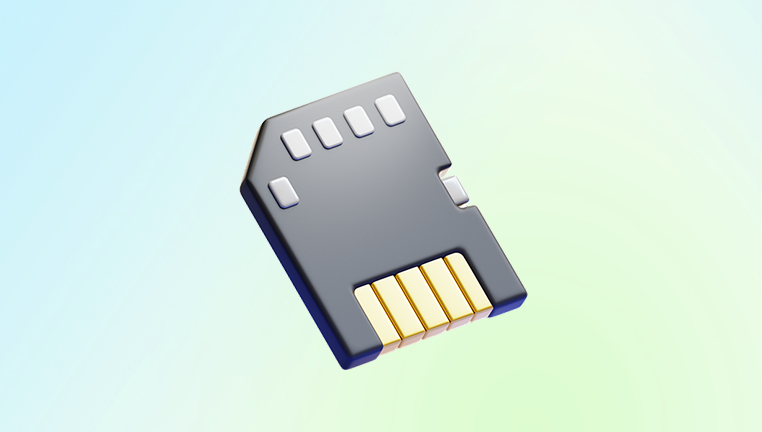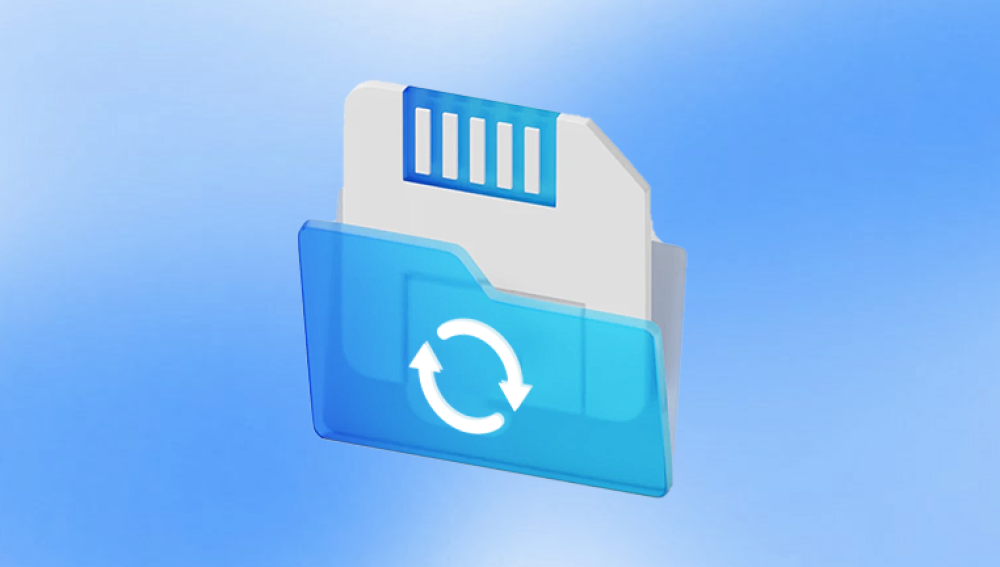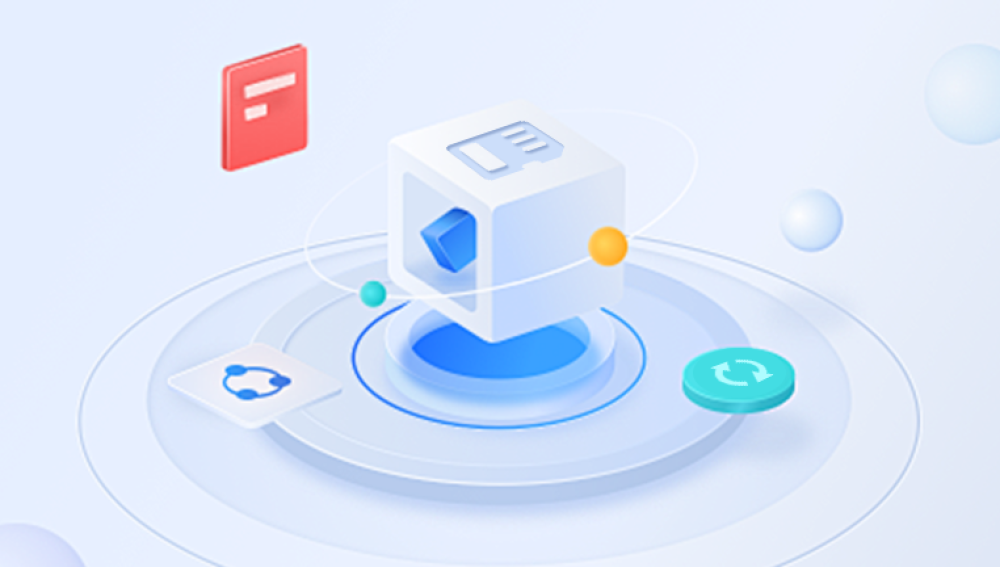An SD (Secure Digital) card is a common storage medium used in digital cameras, smartphones, tablets, and other portable devices. It’s compact, versatile, and can store anything from high-resolution videos to essential documents. But despite its convenience, SD cards are not immune to data loss. Accidentally deleting files, formatting errors, or file system corruption can quickly lead to panic especially if the lost data is irreplaceable.
Fortunately, in many cases, deleted files from an SD card can be recovered. When a file is deleted, it’s not immediately erased. Instead, the system simply marks the space as available, which means the data remains intact until it's overwritten. Using proper tools and methods, you can retrieve photos, videos, documents, and other files.
Chapter 1: SD Card File Deletion
1.1 What Happens When You Delete a File?
Deleting a file doesn’t actually remove it from the SD card. Instead, the system marks the storage block as available for new data. Until something new is written to that block, the file remains recoverable.

1.2 Common Causes of File Deletion on SD Cards
Accidental deletion
Formatting (quick format or full format)
Virus/malware infection
File system corruption
Interruptions during file transfer
Logical damage (not physical hardware failure)
Chapter 2: Important First Steps After Deletion
2.1 Stop Using the SD Card Immediately
To prevent overwriting recoverable data:
Remove the SD card from the device.
Do not take new photos or save new data.
Avoid reformatting or scanning the card with antivirus software before attempting recovery.
2.2 Use a Card Reader
Insert your SD card into a reliable card reader and connect it to a computer. Avoid using the original device (camera, phone) to recover files, as those can complicate access.
Chapter 3: Check Recycle Bin or Trash (Windows & Mac)
If the SD card was connected to a computer when files were deleted via drag-and-drop or manually:
Check Recycle Bin (Windows) or Trash (Mac) first.
Right-click the file and choose Restore (Windows) or Put Back (Mac).
Note: Files deleted from an SD card via internal camera or Android file manager won’t appear in the Recycle Bin.
Chapter 4: Use File History or Time Machine (PC and Mac)
4.1 File History (Windows)
If File History is enabled and the SD card was included in backups:
Open Settings > Update & Security > Backup.
Click More options > Restore files from a current backup.
Locate and restore files.
4.2 Time Machine (macOS)
If the SD card was part of your Time Machine backup:
Open Time Machine.
Navigate to the SD card folder location.
Browse previous versions and Restore the needed files.
Note: These methods only work if backups were previously configured.
Chapter 5: Recover Deleted Files Using Software (Windows/Mac)
When built-in tools fail, file recovery software can scan and retrieve deleted data. Many programs support SD card recovery across major file systems (FAT32. exFAT, NTFS, HFS+).
5.1 Drecov Data Recovery
Drecov Data Recovery is a powerful yet easy-to-use tool that can restore photos, videos, and documents from SD cards.
How to Use Drecov Data Recovery:
Download and install the program on your computer.
Connect your SD card using a reader.
Launch Panda and select the SD card drive.
Choose Quick Scan or Deep Scan (deep is more thorough).
Preview recoverable files.
Select the files and recover them to a different location (not the SD card).
Chapter 6: How to Recover Files from a Formatted SD Card
Even after formatting, files can still be recovered unless the card was securely erased.
6.1 Quick Format vs. Full Format
Quick Format: Only clears file system references. Files remain recoverable.
Full Format: Overwrites data, making recovery difficult but not always impossible.
6.2 Recovery Steps
Use Deep Scan in Panda or another recovery tool.
Let the scan run completely—it may take longer.
Preview and recover files to a different drive.
Chapter 7: Recovering from an Android Device
If you used your SD card in an Android phone and deleted files:
7.1 Use a PC-Based Tool
Remove the SD card and insert it into a card reader.
Use Panda or PhotoRec to scan and recover.
7.2 Using Android Apps (Root Required)
Apps like DiskDigger Photo Recovery can recover deleted files directly from the phone—but usually require root access.
Chapter 8: Recover Files from Camera SD Cards
8.1 DSLR or Action Camera SD Cards
If you deleted photos from a Canon, Nikon, Sony, or GoPro SD card:
Turn off the camera.
Remove the SD card and insert it into a card reader.
Use recovery software like Panda or Recuva to scan.
Avoid capturing new photos before recovery.
Chapter 9: Using PhotoRec for Advanced Recovery
PhotoRec is a free, open-source command-line tool that can recover over 480 file formats.
9.1 How to Use PhotoRec:
Download and extract TestDisk/PhotoRec.
Launch photorec from the terminal or CMD.
Select the SD card from the list.
Choose the file system type (FAT or others).
Select a destination folder.
Let PhotoRec scan and recover files.
PhotoRec ignores the file system and works directly with raw data blocks.
Chapter 10: Recovering Corrupted or Inaccessible SD Cards
If your SD card is detected but unreadable:
10.1 Run CHKDSK (Windows)
cmd
CopyEdit
chkdsk E: /f
This checks and repairs logical file system errors.
10.2 macOS First Aid
Open Disk Utility.
Select the SD card.
Click First Aid to repair.
After repair, reattempt data recovery using Panda or other tools.
Chapter 11: SD Card Recovery on Linux
Linux users can use tools like:
PhotoRec
TestDisk
Extundelete (for ext3/ext4 filesystems)
Commands such as ddrescue can also clone a failing SD card before recovery.
Chapter 12: Professional SD Card Data Recovery Services
If all else fails, contact a professional recovery service.
12.1 When to Consider a Pro Service
SD card is physically damaged
Not recognized by the computer
Data recovery software fails
You need critical files (e.g., wedding photos, legal documents)
12.2 Top Recovery Providers
DriveSavers
Secure Data Recovery
Ontrack
They use cleanroom environments and specialized hardware to recover data from severely damaged cards.
Chapter 13: Tips to Prevent SD Card File Loss
13.1 Backup Regularly
Use cloud backup (Google Drive, iCloud, Dropbox) or transfer files to your computer regularly.
13.2 Use the “Eject” Feature
Always eject your SD card safely before removing it from your computer or device.
13.3 Avoid Formatting the Card in a Different Device
Always format SD cards in the device where they’ll be used to prevent file system mismatches.
13.4 Use Reliable Brands
Invest in high-quality SD cards from brands like SanDisk, Samsung, Lexar, or Kingston.
13.5 Avoid Interrupting File Transfers
Don’t power off your device or remove the card while copying files.
Losing files from an SD card isn’t necessarily permanent. Whether the card was accidentally formatted, corrupted, or the files were manually deleted, tools like Drecov Data Recovery offer powerful options to recover your data. Acting quickly, avoiding overwrites, and using the correct method can make all the difference between recovery and loss.




